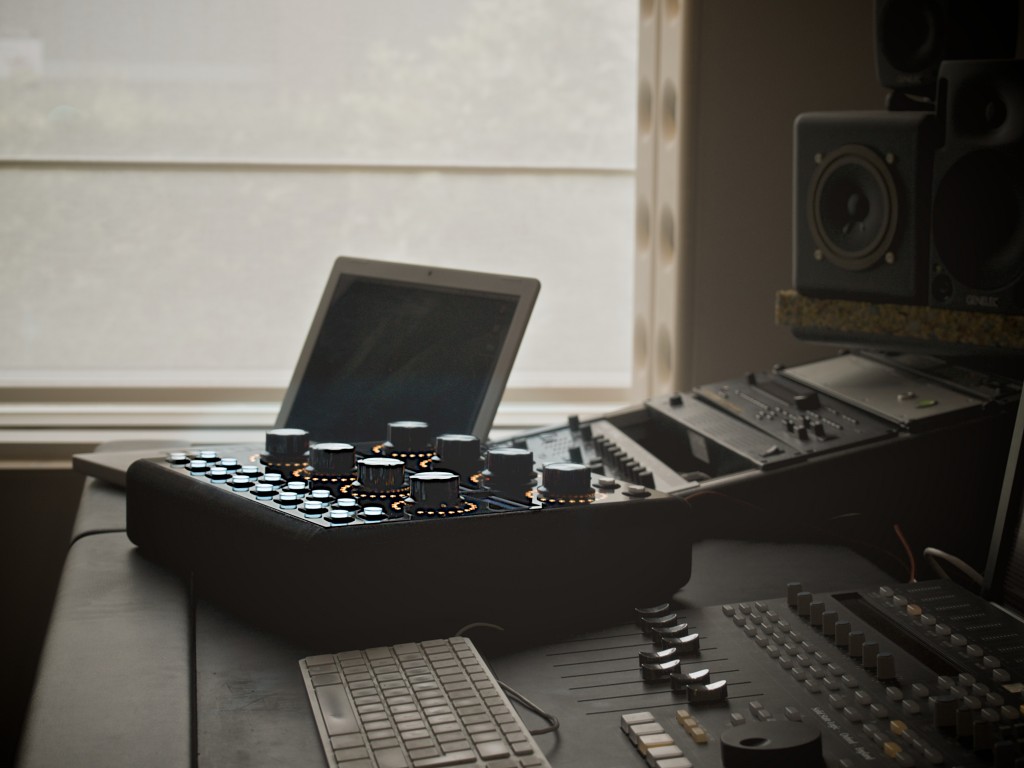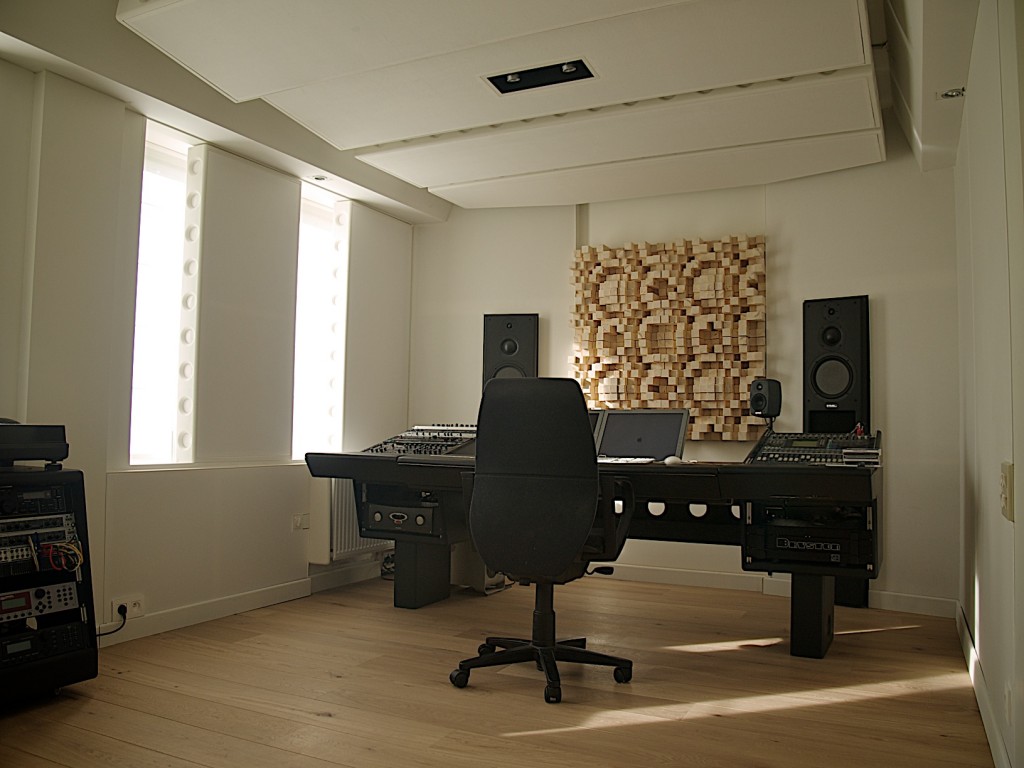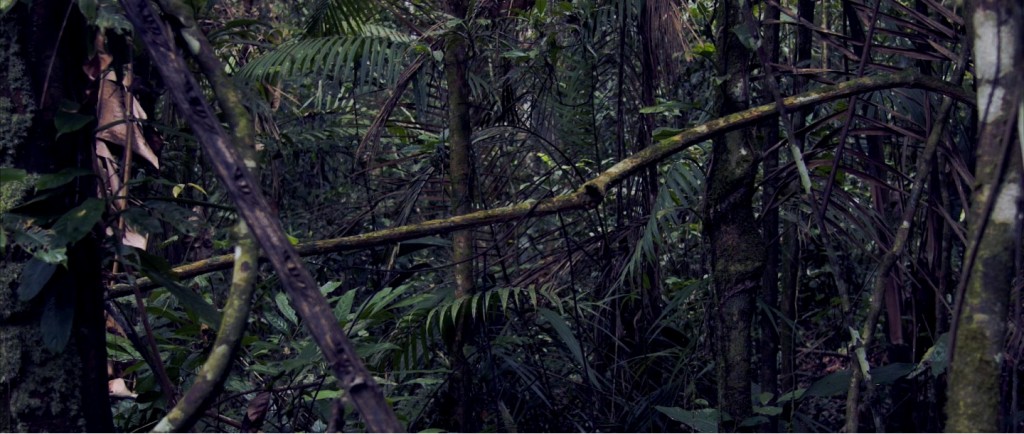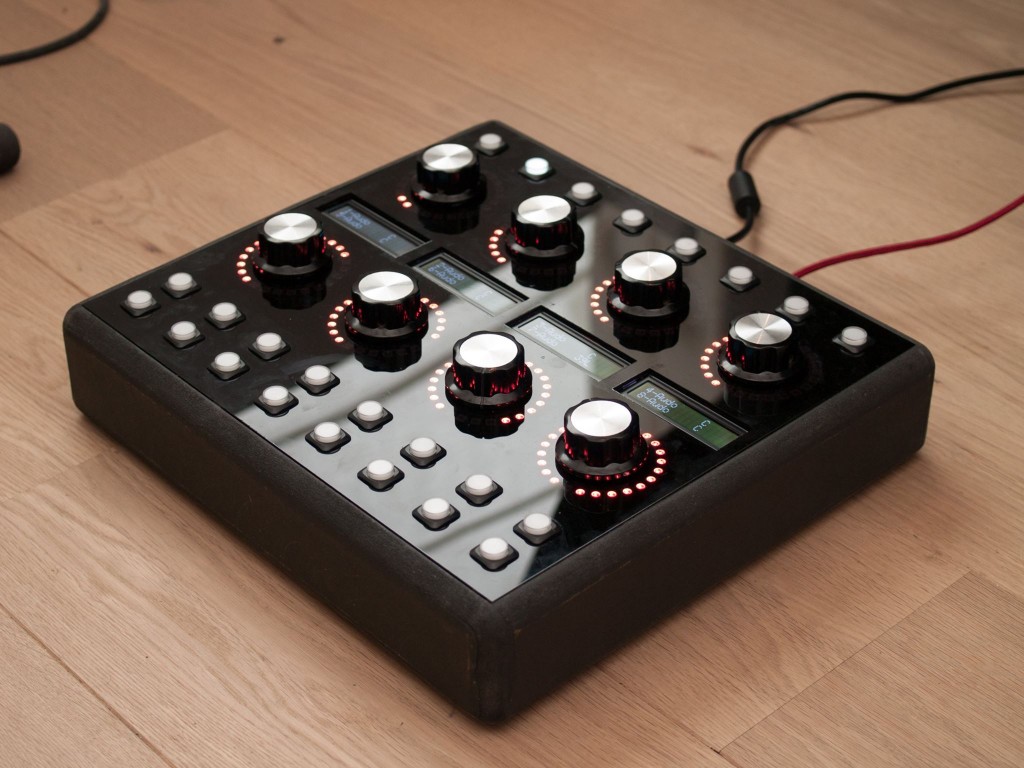SX are the embodiment of just how dynamic DIY music can be. The Belgian duo, now in their second outing, make music that’s unmistakably pop, but with plenty of raw power humming under the hood. And Benjamin and Stefanie are fully invested in their collaboration in every last detail of production, from studio to music video to live. I wanted to talk to them primarily about how that creative process came together.
The sound of SX is big – really big – especially on the obvious hit single, “Hurts.” It’s clear that Stefanie’s vocals are an engine for everything else. Her vocal range is just extraordinary; she’s able to turn effortlessly from sultry crooning to something momentarily vulnerable or fragile to full-throttle ballad.
SX – Hurts from SX on Vimeo.
It’s a perfectly balanced EP: “Hurts” is tribal and heavy, “Mercury” soulful and deep. “Shimona” manages to sound 80s-inspired and contemporary all at once, whispering its way through excited momentum. “Under the Skin” is a slow-dance with sweet synths behind. Great sound design is all over the album, from clever organic percussion to glowing synth abstraction to layered vocals.
Impressively, this is all executed with the same accuracy onstage in the live show, from Stefanie’s vocal acrobatics to the rapid-fire drums (executed on electronic drum pads). The Kantine am Berghain show I caught was the very first of the tour, and it was already nearly flawless.
Onstage, you get a sense of the band’s kinetic energy. Stefanie never stops moving, as if she has more energy than she can contain.
I was most interested in how a sound this natural had come together. And my strong suspicion, even from listening to Benjamin and Stefanie talk, was that this was a real collaboration — don’t think just vocals plus producer. There were times where Benjamin said he would walk out of the studio and let Stefanie do vocals alone, returning to them when done (though not on every occasion, they hastened to add). But even in that event, there was no clear separation of duties, no clear line between production element and song strain, sound design and song craft. It was everything at once, all the time.
If I’m effusive, it’s because I think they’re about to be a big hit. So let’s hear a bit of how they work. And sure enough, the two were constantly completing each other’s sentences, Stefanie usually hanging back to get in the last word.
How are you working together on this production? Of course, the divide between songwriting and production is blurred; now you can kind of do both at once.
Benjamin: It’s more hermetic – building songs together.
Stefanie: (finishes) — a buiding process that comes together. Most of the things really exist inside the studio, so we’re producing and writing at the same time. Sometimes. Sometimes it happens with me just sitting at the piano.
Benjamin: Most of the times we conceptualize afterwards – really put the lyrics on afterwards. And we don’t start from a concrete idea, but from a stream of consciousness. Sometimes we have one sound and … we make a concept around it. We don’t have a fixed metholodgy.
Stefanie: But there is a philosophy, always.
Benjamin: It’s more tension – tension is the word.
Stefanie: All the songs, even if we start from a song or sample or whatever, we’re on some kind of vibe – some kind of ideas.
Tell us a little bit about this idea of tension; you seem to really like that word.
Benjamin: We really like the concept of tension. Coming from somewhere, going through somewhere else – even our logo, SX. It’s like a really sensual, organic ‘S’ and a more dangerous, futuristic ‘X’.
Stefanie: We always look for tension in everything we do. Bringing nature together with technology, for example.
Benjamin: If we have a drum beat, we have some 808 samples we layer with organic stuff. It’s some layer of both. And also in the synthesizers, they may be really electronic, and then her voice is more rooted in the soul. Again it’s the —
Stefanie: — the contrast. It’s something that makes us move. It makes us move our minds, our creativity, our lives.
Does that tension apply to the way you two work together?
Benjamin: Most of the time. Maybe people would say the girls are more soft and the boys, but in our situation, it’s the other side.
Benjamin: I’m the more nostalgic, romantic guy, and you’re more like — [makes a crashing sound]
Stefanie: Yeah, it’s true.
Benjamin: Maybe it’s true, in the way we work together. [She murmurs agreement.]
Stefanie: Sometimes he would be the ever-doubting person. We have so much luxury these days, we do everything ourselves and so much is possible – we have so many choices. He’s really always thinking – a lot. I’m more a feeling-in-my-belly person. So I think that’s the reason why I can more easily make choices. If I feel it, that’s the thing.
Where does the vocal writing happen in your process?
Benjamin: I think in vocals, the first takes we do are really the important ones. I always know we really will want to have these takes. Because those takes are always the best. You’re in the song, you’re in the vibe, and you really can go with that flow.
Stefanie: It’s the most pure.
Benjamin: Afterwards it gets more like a product. I really like demos; I really like raw.
I definitely get the rawness – on the other hand, these tracks definitely feel finished, feel produced. They don’t seem anything like demos.
Benjamin: It depends, because also when Stefanie has more time to feel, a vocal gets better and better.
Stefanie: We always take time for our music to grow. It’s something that’s really important for us — for a lot of artists, I guess. Sometimes it happens that we have a song in two days — but most of the time. it’s not. It’s really growing. It needs to.
What is your studio like?
Stefanie: We have three studios. We have the chaos studio, and then clean studio, and then the studio of his brother.
Benjamin: Yeah, we work together with my brother; he has, like, the real studio.
Stefanie: So it depends on which phase or mood we are.
Benjamin: I work most in the clean studio, and you work —
Stefanie: — in the chaos studio.
And these are computer productions, right; you’re working with Ableton Live? Does the computer travel between studios?
Benjamin: In one studio we have the Mac Pro, and the other laptop. I think Ableton is at the center.
Stefanie: The chaos studio is full of synthesizers and books, and then carpet on the wall. That’s where I take my vocals. The clean studio is when we really need to think clean and abstract.
Benjamin: That’s where I record – where I record sticks on the floor or hit stones together. It’s more a minimalistic, abstract vibe.
So this is how your sound comes together, these different places?
Stefanie: I guess that’s SX, probably. Studio A is the really warm, cosy, home-y feeling. And then you have the abstract minimalistic thing. And then they come together in his brother’s studio.
Benjamin: He built a whole room – sound-proof but a really great acoustic. It’s a great environment to be in; it’s totally white. He has a Solid State Nucleus board. He’s a really calm being, also. So it’s really great to work there, to finish everything there. He’s not really much of an outboard gear slut.
How did your approach change from your maiden release?
Stefanie: I guess the biggest difference is that, for this one we really wanted to challenge ourselves to work with as few elements as possible – and to make it bigger. We just tried to go less is more. And I think I’m really happy with that result. It’s also just grown in musicality. we’ve grown – which is normal, I guess.
For that record, we worked with Ben H. Allen, an American producer; he mixed it —
Benjamin: He was really great to work with.
Stefanie: — but now it was a challenge, because we felt like we can do this ourselves. The challenge was, Let’s do this, then, let’s try to be really happy and make it really good ourselves. And that’s what we did. (laughes)
Because you could.
Benjamin: Because we could. We felt it was going okay, and also it really was great to involve my brother in the whole process. It’s so natural, and for the future, we could really make tracks, we don’t have to fly overseas to have a track.
Stefanie: We were really happy with the sound.
Benjamin: Maybe it’s more stylized, or maybe it’s more designed. But that’s what we like about it now. We can still evolve – that’s something we are, we say to ourselves, you can always evolve.
Stefanie: We keep on searching.
Benjamin: We played with a drummer, but a real kit – an electronic drum kit, the [Roland] SPD-SX.Ed.: That’s the real product name – nice coincidence. And we play with keyboards. I’m more the digital guy, I play with Ableton Push, and the other one is an analog guy who plays with the Prophets and the Mopho from Dave Smith.
Stefanie: That was another challenge; if we want to grow, I might need to get away from the keyboards more. It was really static.
Right, I mean, that’s always a problem for a keyboardist. You can really get trapped behind the keyboard.
Stefanie: I was stuck. And it worked; it was fine, it was fun. But to go to the next level, it is important for me to get away. So it’s really exciting to try and get away, because it’s also a safety zone. There’s always a keyboard between me and the crowd, and I’m just me and my keyboard and my voice. And i’m trying to get out there. I have to learn a lot, but it’s fun.
Benjamin: That’s why we got the second player to do her parts, and even more.
And you’re doing this stuff live. It’s not backing tracks or something.
Stefanie: It’s really important for us that everything is live.
How linear is the live performance? You’re doing some clip triggering?
Benjamin: Most of the sequences are just loops that are in the tracks, and it’s launched by the drummer most of the time. So he likes to play on a click track, but he launches a lot of sequences himself. Sometimes, if it’s too elaborate, then I can launch it — I guess it’s four beat or eight beat sequences, I launch it on my Push. But it’s most of the time, it’s Christopher the drummer who launches.
I like the songs without sequences. Most of the songs we don’t have sequences.
Ah, so this sounds like a really nice way to spend my Monday evening. I’m excited to hear this.
Stefanie: Please keep in mind it’s our first show!
How did the visual elements grow – you’re actually making your own videos and using even original costumes, as well?
Benjamin: Since the beginning of SX, we made all our own videos. So now we went to surinam… with our friend Harvey who’s co-designing clothing of everything Stefanie wears.
And we traveled … with a bus to a lake, and —
Stefanie: — just the Surinam River, it’s where the road stops. You have no option.
Benjamin: For half a day we went by boat through the jungle, and then we were in an amazing, heavenly place. we shot a lot of footage there, and one of them resulted in “Hurts.”
Stefanie: While we’re making our tracks, we already have an idea of what we want to do visually. It’s really important for us, the visual aspect – for us, it’s not just the music, it’s the videos, it’s the clothing, it’s the whole vibe, the whole thing. For “Hurts,” we had the idea for a long time. Because it’s about raw nature, the song. So we really wanted to go to the jungle — somewhere where it’s really pure, raw — that’s why we went to Surinam.
Benjamin: We had this idea that she’s an insect in the jungle. And that’s something that’s taking place after the singularity has happened, after the moment that technology has more consciousness than human consciousness. And then everything turns back to nature, and Stefanie is there in that jungle singing that it hurts. The whole process that we’re going through now – technology is taking over our human mood. And we were so intrigued by this idea that we really wanted to do something in the jungle to say that everything’s going to be alright. It’s like a new hippie song for us.
So it’s optimistic in that way?
Benjamin: Yeah, really optimistic.
Stefanie: It’s a message of hope – everything’s going to be fine. Nature’s going to win anyhow.
Benjamin: If it hurts, keep on going.
Stefanie: Yeah, if it hurts, keep on going. Go back to nature; it always calms you. We see a lot of people, the world we live in, people go mad. It’s too much. Because we live in a world where we are constantly occupied, busy with all these subjects.
We could have done this video in some kind of studio or something, but it wouldn’t have been real. And so that’s the main thing, to feel the realness.
Benjamin: Maybe we have to do a making of video that isn’t so stylized so people realize, ah, they really went to the jungle. It’s not like a backdrop.
So that reality was important to you.
Benjamin: For us, yeah. Like the oil you see on her skin —
Stefanie: It’s not oil! (laughs)
Benjamin: It’s sweat! Anti-mosquito…
Stefanie: Yeah, yeah, I think for us it’s realy important for ourselves to make a true story, a real story. Every song we do it has to be real.
Benjamin: For us, nature’s apogee — that can be love. Animals together, humans together. Or that can be the consciousness of people, the consciousness that technology is getting more and more creative. That can also be nature’s apogee. It’s that tension between love and the other side, again, that was at the source of the song.
Stefanie: We tell you the story, but for us it’s also important that the music and the lyrics are layered. You can make your own story.
Stefanie: And sometimes our ideas and concepts – we want to give people a simple message. Even if we start with something that isn’t as easy to think about. (laughs)
We make pop music, so it’s supposed to be —
Benjamin: — it’s still a bit poppy, although it’s scientific, or philosophical — but it’s still poppy —
Stefanie: Yeah, because we wanted to bring our music to everyone. We don’t want to be in a box.
But you would describe it as pop?
Benjamin: What is pop? I think that’s the question. Pop is the music that has the least boundaries, so you’re the most free. Like if you have techno music — or if you’re in the hardcore scene…
Stefanie: Pop music, you’re totally free to do what you want. I think that’s something really good … We can put pop music in a garbage bin and say, what’s wrong with pop music these days. But I think we have to be positive and see it as a form of free speech.
Benjamin: I studied jazz music. We just translate it – we just say pop music.
We work with verse, chorus, verse, chorus, bridge…
Stefanie: It’s really wide. It can be anything, in a way.
You could call it electronic gospel. You can say whatever you want! (laughs)
Thanks, SX! Hope to see you back around.
More on the band:
Plus they’ve done a music video minisite (and yes, this time they get to do the behind the scenes, lest you think this is all some green screen trick):
https://shimona.redbullelektropedia.be
Update – about that custom controller! Yep, we all spotted that! It’s called MOOD, and you can check out more in this Facebook gallery.






